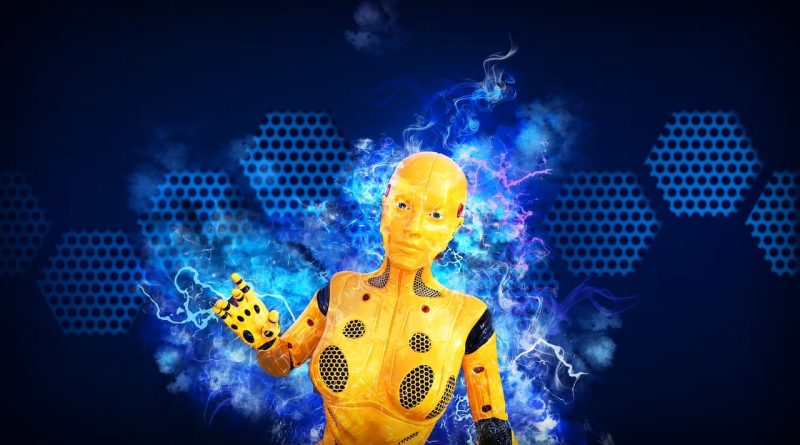What is Cognitive Robotics
Cognitive robotics is a relatively new field of study that combines cognitive science and robotics. Researchers in this field are working to create robots that can independently perform tasks based on their understanding of the world around them. In this post, we will take a look at what cognitive robotics is, some of the challenges involved in creating intelligent robots, and some of the possible applications for this technology.
What is cognitive robotics and what are its key features
Cognitive robotics is a relatively new field of robotics that takes inspiration from the way natural cognitive and biological systems work and focuses on the study and implementation of those cognitive principles in robotic systems. This involves the use of artificial intelligence, artificial neural networks, machine learning, natural language processing, cognitive science, neuroscience, and engineering.
The basic idea of cognitive robotics is to create robots with cognitive phenomena and intelligent behavior that can interact with their surroundings and respond to various stimuli. They are designed to carry out tasks that require intelligence, such as planning, reasoning, and decision-making. These systems are intended to be adaptive and flexible, able to handle a wide range of tasks in dynamic environments.
Key features of cognitive robotics
- Artificial intelligence: Cognitive robots are able to learn and understand their surroundings through the use of artificial intelligence algorithms. This allows them to interact with their environment in a more natural way.
- Machine learning: Robots in the cognitive robotics field also rely on machine learning in order to improve their understanding of their surroundings over time. This allows them to adapt to new situations and learn from past experiences.
- Natural language processing: Cognitive robots also use natural language processing in order to communicate with humans. This allows for more fluid interactions between humans and robots.
- Cognitive architecture: A cognitive architecture is a data structure that mimics the way the human brain processes information. This can include features such as motor control, sensory processing, and working memory. It is a key part of cognitive robotics, as it determines how information is processed and how decisions are made. This processing architecture is often inspired by the human brain, and cognitive robotics research aims to apply these principles to create robots that can think and learn like humans.
- Motor control is another important aspect of cognitive robotics. This involves creating algorithms that enable robots to control their movements in order to carry out tasks. Motor functions are often closely linked to cognitive abilities, and research in this area aims to create robots that can not only move effectively, but also make decisions based on their environment.
What are some of the potential applications of cognitive robotics
Cognitive robotics has a wide range of potential applications in both the personal and industrial sectors. Some of the most promising applications include:
- Personal Assistants: Cognitive robots could be used as personal assistants to help people with disabilities or elderly people who need assistance with daily tasks.
- Healthcare: Cognitive robots could also be used in the healthcare sector to assist with tasks such as patient care, diagnosis, and research.
- Manufacturing: Cognitive robots could be used in manufacturing to help with tasks such as product design, quality control, and production line management.
- Education: Cognitive robots could be used in education to help students learn about artificial intelligence, machine learning, and natural language processing.
How does cognitive robotics differ from traditional robot design
Cognitive robotics is a relatively new and upcoming technology that allows for robots to be able to learn and understand their surroundings, as well as interact with humans in a more natural way. It differs from traditional robot design in that cognitive robots are able to take into account their surroundings and learn from experience, whereas traditional robots are typically programmed with specific instructions that tell them what to do. This makes cognitive robots much more versatile and adaptable, which could have a huge impact on many different industries, as mentioned earlier.
What challenges does cognitive robotics face as a field
1. Safety
One of the primary challenges that it faces is safety. Robots are increasingly being used in a variety of settings, including homes, hospitals, and factories. As robots become more advanced, there is a greater risk that they could injure or even kill people if they malfunction.
2. Reliability
Another challenge that cognitive robotics faces is reliability. Robots are often used in situations where they need to be able to perform their tasks correctly and without error. However, as robots become more complex, it becomes more difficult to ensure that they will always function as intended.
3. Ethics
As robots become more advanced, another challenge that cognitive robotics faces is ethical concerns. For example, should robots be given the same rights as humans? If so, how would they be treated if they committed a crime? Additionally, should robots be allowed to make decisions that could impact people’s lives, such as whether or not to provide medical treatment?
4. Privacy
As robots become more prevalent in society, another challenge that cognitive robotics faces is privacy concerns. For example, if a robot is collecting data about a person’s daily activities, how will that data be used and who will have access to it? Additionally, as robots become more capable of understanding and responding to human emotions, there is a risk that they could be used to manipulate people emotionally or psychologically.
5. Cost
One of the challenges that cognitive robotics faces is cost. Robotics technology is typically very expensive and thus out of reach for many individuals and organizations. As robots become more advanced and widespread, it is important to find ways to make them more affordable so that they can be used by a wider range of people and organizations
6.Developing AI that can think and learn like humans
Another challenge that cognitive robotics faces is developing AI that can learn and execute cognitive processes like humans. This is a difficult task as the human brain and cognitive control are very complex and not fully understood. Additionally, there is a risk that if robots become too good at imitating human performance, they could eventually surpass us in intelligence, which could lead to disastrous consequences.
7. Getting robots to interact seamlessly with humans
A challenge that cognitive robotics faces is getting robots to interact seamlessly with humans. This is difficult as humans are very social creatures and have a lot of subtle cues that we use when interacting with each other. For example, body language, facial expressions, and tone of voice can all convey a lot of information about what we are thinking and feeling.
8.Designing robots that are able to handle uncertain or unstructured environments
Another challenge that cognitive robotics faces is designing physical systems that are able to handle uncertain or unstructured environments in complex world. This is difficult as it is hard to predict all the different ways that a robot might need to interact with its surroundings.
9.Ensuring that robots are safe to work alongside humans
One of the key challenges of cognitive robotics is to ensure that robots are safe to work alongside humans. In many industrial and manufacturing settings, robots are already in close proximity to human workers. As cognitive robotics technologies advance, it is important to consider the potential risks that these devices may pose to worker safety. One area of concern is the potential for robots to cause physical harm if they malfunction or are not properly programmed. Another concern is the possibility that cognitive robotics technologies could be used to create malicious robotic devices that could deliberately harm humans. While these concerns may seem far-fetched, it is important to consider them when developing cognitive robotic technologies.
10.Making robots affordable for consumers
A challenge that cognitive robotics faces is making robots affordable for consumers. Robotics technology is typically very expensive and thus out of reach for many individuals and organizations. As robots become more advanced and widespread, it is important to find ways to make them more affordable so that they can be used by a wider range of people and organizations.
Conclusion
Cognitive robotics is a relatively new and upcoming technology that allows for robots to be able to learn and understand their surroundings, as well as interact with humans in a more natural way. Cognitive robotics has the potential to impact many different industries, from manufacturing to health care. However, there are several challenges that cognitive robotics faces, such as cost, developing AI that can think and learn like humans, getting robots to interact seamlessly with humans, designing robots that are able to handle uncertain or unstructured environments, and ensuring that robots are safe to work alongside humans. It is important to consider these challenges when developing cognitive robotic technologies.



